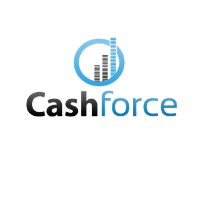Digital Treasury: Can it Tackle the Cash Forecasting Challenge?
01-05-2021 | Cashforce | treasuryXL |
Several decades ago, Excel was invented to process/model inputs and generate outputs. Today, it is still by far the most used technology to generate a cash flow forecast. However, as we strive to achieve better forecasting accuracy rates, our desire for automation and the seamless processing of FX hedges, liquidity borrowings and deposits have underlined the need for more effective modelling and increasingly powerful data processing.
The good news is that we’re at the forefront of that digital treasury revolution, or so-called ‘Treasury 4.0’. This means:
- Leaving the manual-driven Excel jungle behind us and adopting an automated, data-driven forecasting process
- Automating decision-making based on logic (rules that are within corporate policies), which will drive our liquidity and FX hedge usage
THE CASH FLOW FORECASTING CHALLENGE
Last year, multiple treasury surveys from sources including the Association for Financial Professionals, the UK Association of Corporate Treasurers, PwC and Citi, concluded that cash flow forecasting remains the primary challenge for treasurers today.
What are the headaches behind the process? Why is it so difficult for a corporate treasurer to generate an accurate cash flow forecast? And do we currently have the opportunity to solve this challenge?
The cash flow forecasting challenge consists of multiple underlying process complexities. The aim is to create an accurate cash flow forecast that helps us to make optimal FX and liquidity decisions.
What is accurate? You could write a book about cash forecast accuracy, since accuracy levels are totally different when comparing forecasts between different industries, time horizons, cash flow categories etc. When we forecast with a time horizon of five years, the accuracy levels are, of course, nowhere near as precise as when we forecast something just a few days in advance – and more reliable data is available. Depending on the goal, the treasurer will need a specific form of accuracy.
In addition, cash flow forecast data, together with the forecast assumptions/used models, need to come together in a well-coordinated process. Other challenges lie behind this process, including a disconnect between different data sources/systems such as enterprise resource planning (ERP) and treasury management systems.
Furthermore, there are myriad data-related issues to contend with including: concerns regarding data quality inside these multiple systems; the sheer volume of data to be processed; the need for granular and/or high-level data; and whether reliable external data can be found to be used to further improve the model.
Finally, aligning and coordinating forecasting assumptions between the different company departments is a time-consuming exercise. Imagine pulling all these assumptions from both HQ and local levels into an Excel model. No easy task.
FIG 1: THE CASH FLOW FORECASTING CHALLENGE
|
SO, WHAT HAS CHANGED?
Solving the cash flow forecasting challenge is easier said than done. Nevertheless, today treasurers can leverage several available technologies that, if used together intelligently, can tackle the described challenges head-on.
First, when we think about the goals and the accuracy levels that treasurers want to achieve, we can use different models to calculate those, such as accuracy heatmaps. Second, when we consider the data (ERP and non-ERP) required to run these cash flow forecasts, we can rely on big data engines, advanced extract, transform and load (ETL) processes, and application programming interface- (API) and non-API-based connectors that create an easy data flow into forecasting models. We have ways to analyse data quality as never before and we can set up a reliable work flow process to obtain assumptions from the decentralised business units all the way up to HQ level. This generates a cash flow forecast while keeping the granular detail.
Third – and we are only scratching the surface here – several machine learning models and algorithms are now at our disposal. These can be used to build and optimise cash flow forecasting models, so we can indeed solve the forecasting challenge in a reliable way.
Finally, armed with the right tools, the salient question is: what can we actually do with the cash forecast? We call it Cash Flow Forecasting 3.0: automating the decisions that are based upon the cash forecast (investing excess liquidity, performing a particular hedge, etc.) or the so-called post-forecasting decision-making engine.
By combining technologies we can not only automate manual and repetitive tasks, but effectively integrate the systemic data with human expertise and algorithmic trends from historic data. Add to this the use of recommendation engines and intelligent insights, and the interplay of data inputs can generate enriched decision support. Apparent visualisations and scenario analyses can offer a clear view of actionable results that treasury and management can use in their decision process. Reliable technology that enables people to make high-caliber decisions; this, we believe, is the true power of digital.
About Cashforce
Cashforce is a Cash Forecasting & Working Capital Analytics platform for corporates, focused on analytics, automation and integration. Cashforce connects the Treasury department with other finance / business departments by offering full transparency into its cash flow drivers, accurate & automated cash flow forecasting and treasury reporting. The platform is unique in its category because of the seamless integration with numerous ERPs & banking systems, the ability to drill down to transaction level details, and the intelligent AI-based simulation engine that enables multiple cash flow scenarios, forecasts & impact analysis.






